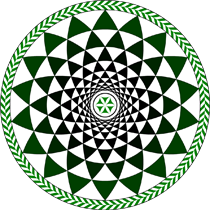Speaker
Dr
Robert Podgajny
(Faculty of Chemistry, Jagiellonian University, Ingardena 3, 30-060 Kraków, Poland)
Description
`Cyanido-bridged clusters serve as convenient coordination platforms for switchable materials, to mention single-molecular magnets (SMMs) or spin-crossover (SCO) systems and charge-transfer induced spin transitions (CTIST) systems combined with light induced excited spin state trapping (LIESST). Their functional potential can be strengthened by decoration of external complexes using chiral or luminescent features as well as by chemical or physical tuning [1].`
`In this contribution we present two structural strategies towards tunable functionality in cyanide-bridged clusters M$^\mathrm{II}_9$[M’$^\mathrm{V}$(CN)$_8$]$_6$L$_x$ (M = divalent metal ion; M’ = W, Re; L = blocking or bridging organic ligands). Firstly, various metal ions combinations lead to diversity of spin carriers distribution and related function schemes along the bimetallic or even trimetallic cluster skeletons. Secondly, a variety of ligand sets can be coordinated at the surface of selected cluster. As a result, we obtain different magnetic behavior: from diamagnetic or weakly paramagnetic species towards high spin cluster, SMM clusters as well as dynamic networks hosting electron transfer (ET) and/or spin-structure SCO phase transition [2]. As the added value, we take opportunity to discuss also: (i) the intriguing composition-structure correlations due to the site preference along the coordination skeleton and (ii) possible routes towards structure-properties extension via anchoring of additional functional units due to coordination preference of bimodal ligands.`
`References`
[1] (a) D. Aguila, Y. Prado, E. S. Koumousi, C. Mathoniere and R. Clerac, `$\textit{Chem. Soc. Rev.}$`, 2016, `$\textbf{45}$`, 203-224. (b) D. Pinkowicz, R. Podgajny, B. Nowicka, S. Chorazy, M. Reczyński, B. Sieklucka, `$\textit{Inorg. Chem. Front.}$` 2015, `$\textbf{2}$`, 10-27. (c) L. C. Beltran, J. Sokol and J. Long, `$\textit{J. Cluster Sci.}$`, 2007, `$\textbf{18}$`, 575-596.
[2] (a) S. Chorazy, J. J. Stanek, W. Nogas, A. M. Majcher, M. Rams, M. Kozieł, E. Juszyńska-Gałązka, K. Nakabayashi, S. Ohkoshi, B. Sieklucka, R. Podgajny, `$\textit{J. Am. Chem. Soc.}$` 2016, `$\textbf{138}$`, 1635–1646. (b) S. Chorazy, M. Rams, A. Hoczek, B. Czarnecki, B. Sieklucka, S. Ohkoshi, R. Podgajny, `$\textit{Chem. Commun.}$` 2016, `$\textbf{52}$`, 4772-4775 (c) S. Chorazy, R. Podgajny, K. Nakabayashi, J. A. Stanek, M. Rams, B. Sieklucka, S. Ohkoshi, `$\textit{Angew. Chem. Int. Ed.}$` 2015, `$\textbf{54}$`, 5093-5097. (d) S. Chorazy, J. J. Stanek, J. Kobylarczyk, S. Ohkoshi, B. Sieklucka, R. Podgajny, `$\textit{Dalton Trans.}$`, DOI: 10.1039/C7DT1416C.
Authors
Dr
Robert Podgajny
(Faculty of Chemistry, Jagiellonian University, Ingardena 3, 30-060 Kraków, Poland)
Dr
Szymon Chorazy
(Faculty of Chemistry, Jagiellonian University, Ingardena 3, 30-060 Kraków, Poland)
Co-authors
Dr
Anna Majcher
(Institute of Physics, Jagiellonian University, Łojasiewicza 11, 30-348 Kraków, Poland)
Prof.
Barbara Sieklucka
(Faculty of Chemistry, Jagiellonian University, Ingardena 3, 30-060 Kraków, Poland)
Prof.
Jan. Józef Stanek
(Institute of Physics, Jagiellonian University, Łojasiewicza 11, 30-348 Kraków, Poland)
Mr
Jędrzej Kobylarczyk
(Faculty of Chemistry, Jagiellonian University, Ingardena 3, 30-060 Kraków, Poland)
Dr
Michal Rams
(Institute of Physics, Jagiellonian University, Łojasiewicza 11, 30-348 Kraków, Poland)
Prof.
Shin-ichi Ohkoshi
(Department of Chemistry, School of Science, The University of Tokyo)

